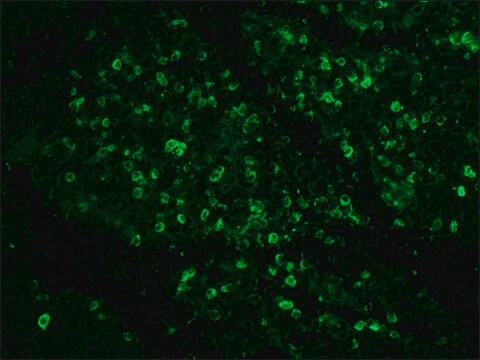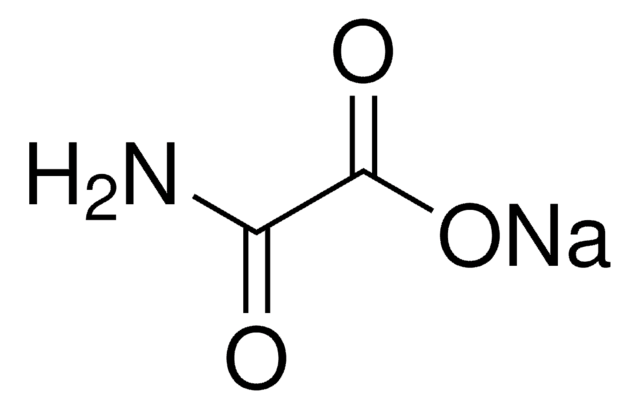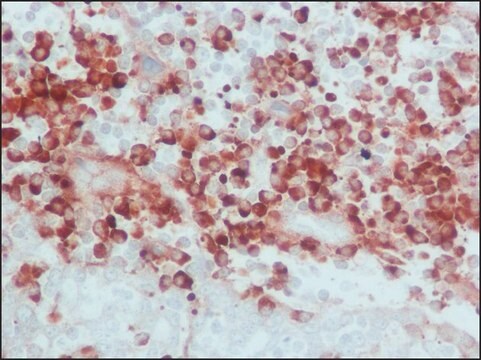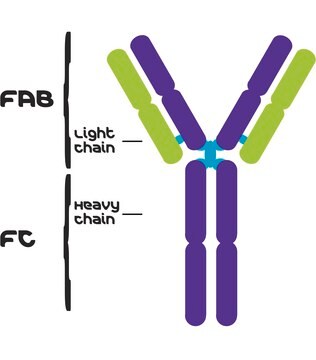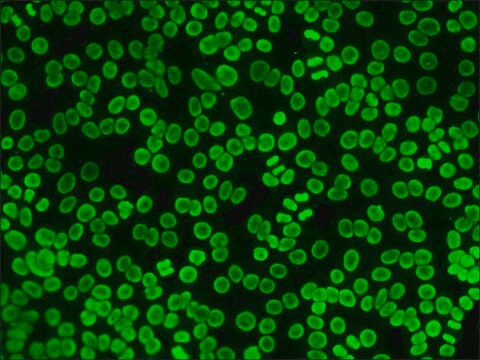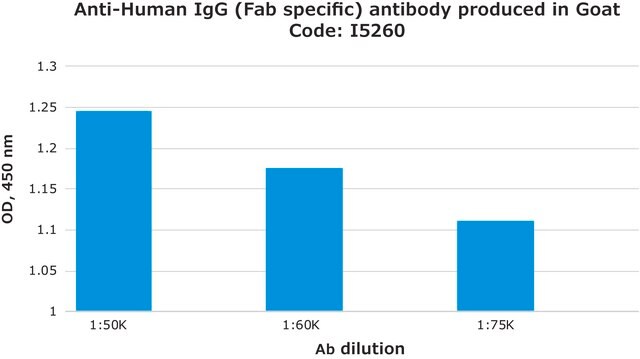I2011
Anti-Human IgG (whole molecule) antibody produced in rabbit
IgG fraction of antiserum, buffered aqueous solution
Synonym(s):
Anti-IgG antibody, Rabbit anti-Human IgG
Sign Into View Organizational & Contract Pricing
All Photos(1)
About This Item
Recommended Products
biological source
rabbit
Quality Level
conjugate
unconjugated
antibody form
IgG fraction of antiserum
antibody product type
secondary antibodies
clone
polyclonal
form
buffered aqueous solution
technique(s)
indirect ELISA: 1:80,000
quantitative precipitin assay: 3.0-4.0 mg/mL
shipped in
dry ice
storage temp.
−20°C
target post-translational modification
unmodified
Looking for similar products? Visit Product Comparison Guide
Related Categories
General description
Immunoglobulin G (IgG) belongs to the immunoglobulin family and is a widely expressed serum antibody. Immunoglobulin have two heavy chains and two light chains connected by a disulfide bond. It is a glycoprotein, usually found as a monomer. IgG is further subdivided into four classes namely, IgG1, IgG2, IgG3, and IgG4. IgG antibody subtype is the most abundant of serum immunoglobulins of the immune system. About 70 % of the total immunoglobulin consists of IgG.
Specificity
The antiserum is determined to be immunospecific for human IgG. Reactivity with light chains is observed.
Application
Anti-Human IgG (whole molecule) antibody produced in rabbit has been used in immunoprecipitation and enzyme linked immuno sorbent assay (ELISA).
Anti-Human IgG (whole molecule) antibody produced in rabbit was coated on Sepharose beads to immunoprecipitate IgG from HUVEC cultured conditioned medium.
Biochem/physiol Actions
IgG antibody subtype is the most abundant of serum immunoglobulins of the immune system. It is secreted by B cells and is found in blood and extracellular fluids and provides protection from infections caused by bacteria, fungi and viruses. Maternal IgG is transferred to fetus through the placenta that is vital for immune defense of the neonate against infections.
Immunoglobulin G (IgG) participates in hypersensitivity type II and type III.
Physical form
Solution in 0.01 M phosphate buffered saline, pH 7.4, containing 15 mM sodium azide as preservative
Storage and Stability
For continuous use, store at 2-8 °C. For extended storage, the solution may be frozen in working aliquots. Repeated freezing and thawing, or storage in "frost-free" freezers, is notrecommended.If slight turbidity occurs upon prolonged storage, clarify the solution by centrifugation before use.
Disclaimer
Unless otherwise stated in our catalog or other company documentation accompanying the product(s), our products are intended for research use only and are not to be used for any other purpose, which includes but is not limited to, unauthorized commercial uses, in vitro diagnostic uses, ex vivo or in vivo therapeutic uses or any type of consumption or application to humans or animals.
Not finding the right product?
Try our Product Selector Tool.
Storage Class Code
10 - Combustible liquids
WGK
WGK 3
Flash Point(F)
Not applicable
Flash Point(C)
Not applicable
Personal Protective Equipment
dust mask type N95 (US), Eyeshields, Gloves
Choose from one of the most recent versions:
Already Own This Product?
Find documentation for the products that you have recently purchased in the Document Library.
Customers Also Viewed
D Carvalho et al.
The Journal of clinical investigation, 97(1), 111-119 (1996-01-01)
IgG autoantibodies that bind human endothelial cells (AECA) were detected by ELISA in 30 of 42 samples of sera from patients with scleroderma. Pretreatment of human umbilical vein endothelial cells with AECA-positive scleroderma sera, or IgG purified from these sera
Molecular Genetics of Immunoglobulin (1987)
Adherence of platelets to in situ albumin-binding surfaces under flow conditions: role of surface-adsorbed albumin
Thakurta SG, et al.
Biomedical Materials (Bristol, England), 7(4), 045007-045007 (2012)
J Hamm et al.
Proceedings of the National Academy of Sciences of the United States of America, 94(24), 12839-12844 (1997-12-16)
The anti-idiotype approach is based on the assumption that an antibody specific for a receptor-binding domain of a ligand could be structurally related to the receptor. Therefore, a structural mimic of a receptor-binding domain, selected with an anti-ligand antibody, might
Wei Wang et al.
Journal of pharmaceutical sciences, 96(1), 1-26 (2006-09-26)
The number of therapeutic monoclonal antibody in development has increased tremendously over the last several years and this trend continues. At present there are more than 23 approved antibodies on the US market and an estimated 200 or more are
Our team of scientists has experience in all areas of research including Life Science, Material Science, Chemical Synthesis, Chromatography, Analytical and many others.
Contact Technical Service